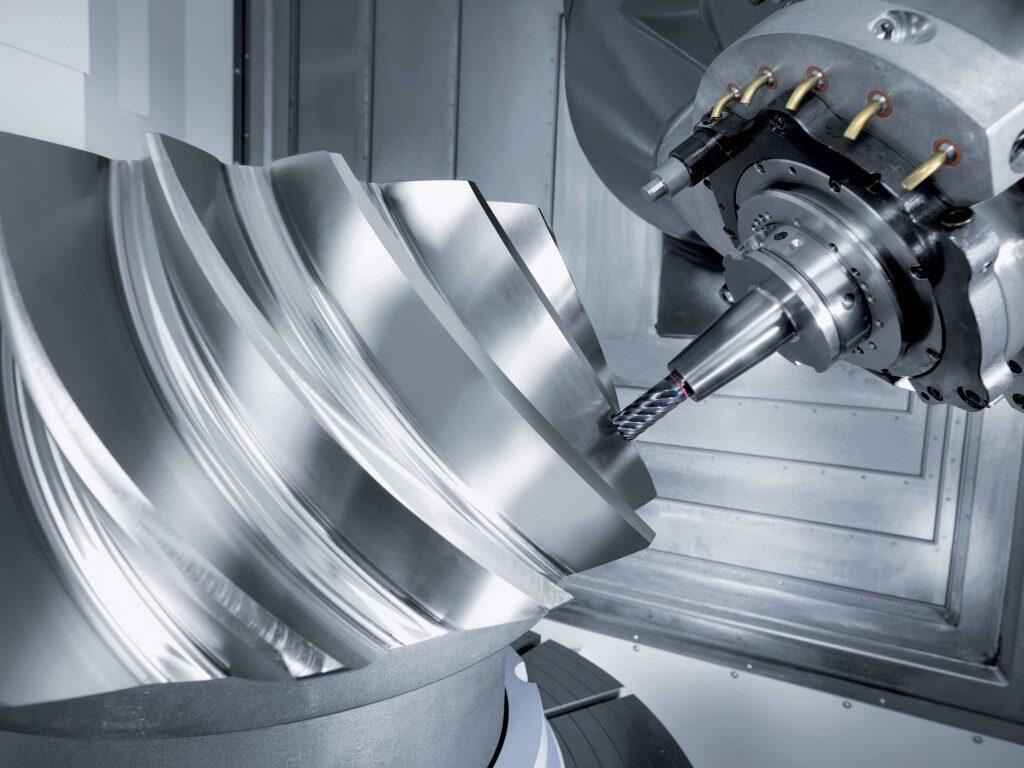CNC machining (Computer numerical control machining) is a method of machining using computer-controlled CNC machine tools, which is widely used in parts manufacturing in various industries. It realizes the machining of the workpiece by controlling the machine tool to cut along the specified path through the pre-written machining program. The following will introduce the process flow of CNC machining.
First, design and develop the processing technology
Before CNC machining, it is first necessary to design the product and develop the processing technology. According to the requirements and functions of the product, the designer uses CAD (computer aided design) software to design the product. Then, the process engineer develops the processing technology according to the shape, material and processing requirements of the product, including the selection of the appropriate cutting tools, cutting parameters, cutting paths, etc.
Secondly, write the processing program
Machining program is the core of CNC machining, it contains the machine tool action instructions, cutting parameters, cutting path and other information. Writing the machining program requires the use of CAM (Computer aided manufacturing) software to convert the design file of the product into the machining program. When writing the processing program, it is necessary to consider the cutting performance of the material, the rationality of the process and other factors to ensure the efficiency and quality of the processing process.
Then, the machine tool and tool clamping are carried out
Before CNC machining, the workpiece needs to be clamped on the machine tool and the appropriate tool is selected for cutting. Machine tool clamping is the process of fixing the workpiece to the machine tool, which needs to consider the shape, size and processing requirements of the workpiece. Tool clamping is the process of installing the tool on the machine tool, and it is necessary to select the appropriate tool type and specification, as well as the correct installation method. The accuracy and stability of machine tool and tool clamping has an important impact on machining accuracy and efficiency, so it needs to be carefully adjusted and checked.
Next, the processing operation is carried out
After the machine tool clamping and tool clamping are completed, the CNC machining operation can begin. The operator inputs the written machining program into the CNC machine tool controller, and then through the controller's instructions, the machine tool cuts in accordance with the path and speed specified by the program. During the machining process, the operator needs to monitor the machining status and adjust the cutting parameters and tools in time to ensure the machining quality and efficiency.
Finally, the processing inspection and finishing are carried out
After the completion of CNC machining, the workpiece needs to be inspected and trimmed. Measurement tools and equipment can be used to test the size, shape and surface roughness to verify that the workpiece meets the requirements. Finishing is the process of dressing, grinding or polishing the workpiece to eliminate possible processing defects and improve the accuracy and surface quality of the workpiece.
In summary, the CNC machining process covers the design and development of machining technology, writing machining procedures, machine tool clamping and tool clamping, processing operation, and processing inspection and dressing. Each link requires accurate operation and strict control to ensure the efficiency of the processing process and the quality of the workpiece.

The development of CNC machining has provided high-precision and high-efficiency parts manufacturing solutions for various industries. Compared with traditional manual operation and conventional machining, CNC machining has the following advantages:
1, high precision
CNC machining through the precise control of CNC machine tools and high-speed rotation of tools, high-precision parts can be machined. Processing accuracy can reach sub-millimeter or even higher levels to meet the requirements of complex parts.
2. High efficiency
CNC machining adopts computer programming and automatic control, which can realize automatic continuous processing and greatly improve production efficiency. The time and workload of manual operation are reduced, and production efficiency and capacity are improved.
3. Flexibility
CNC machining can be flexibly processed according to different product requirements and design requirements. Just modify the processing program and adjust the tool, you can realize the processing of different parts, avoiding the trouble of replacing equipment in traditional machining.
4. Repeatability
CNC machining by writing processing programs and automatic control, can achieve accurate cutting path and processing parameters, to ensure the consistency and repeatability of processing. It is not affected by the technical level and experience of the operator, reducing the influence of human factors on the processing quality.
5. Versatility
CNC machining enables a variety of machining operations, such as milling, turning, drilling, tapping, etc. A CNC machine tool can complete a variety of processing tasks, reducing equipment investment and floor space.
In summary, CNC machining provides a part manufacturing solution with high efficiency, high precision, flexibility, repeatability and versatility. It is widely used in various industries, such as aerospace, automotive, electronics, medical equipment, mold manufacturing and so on.
In the aerospace field, CNC machining can manufacture complex shaped aerospace parts, such as turbine blades, engine parts, aerospace structural parts, etc. Due to the high precision and repeatability of CNC machining, the quality and performance requirements of parts can be ensured.
In the automotive industry, CNC machining can manufacture automotive engine parts, chassis parts, body parts, etc. Through CNC machining, high precision and consistency of parts can be achieved, improving the performance and safety of vehicles.
In the field of electronics, CNC machining can manufacture electronic parts, circuit boards, shells, etc. Due to the high efficiency and flexibility of CNC machining, it can meet the rapid development and production needs of electronic products.
In the field of medical equipment, CNC machining can manufacture medical device parts, artificial joints, dental equipment, etc. The high precision and repeatability of CNC machining can ensure the quality and safety of medical equipment.
In the field of mold manufacturing, CNC machining can manufacture various types of molds, such as injection molds, die casting molds, stamping molds, etc. Due to the versatility of CNC machining, high-precision machining of complex molds can be achieved.
Overall, the development of CNC machining provides high efficiency, high precision and flexible parts manufacturing solutions for various industries. It can control the machine tool through the computer program for automatic processing, which greatly improves the production efficiency and product quality.
One of the advantages of CNC machining is high precision. Thanks to the use of computer program control, very precise machining can be achieved to achieve micron level accuracy requirements. This is very important for some parts that require a precise fit, such as gears, threads, etc.
Secondly, CNC machining has a high degree of flexibility. By changing different tools and adjusting the processing path, a variety of complex shapes of parts can be manufactured. Moreover, the production of different products can be achieved only by modifying the program, without the need to redesign and manufacture new tooling.
CNC machining is also repeatable. Once the correct machining procedures and parameters are set, the machine can operate continuously and maintain consistent machining quality without manual intervention. This is important for high volume production to ensure that each part meets the specified size and quality requirements.
In addition, CNC machining is versatile. By choosing different tools and processing methods, drilling, milling, cutting, turning and other processing operations can be achieved to meet the processing needs of different parts. This makes CNC machining a versatile manufacturing process.
Overall, CNC machining is an efficient, precise, flexible and reliable part manufacturing solution. With the continuous development of technology, CNC machining will play an increasingly important role in various industries, promoting the progress and development of manufacturing.






